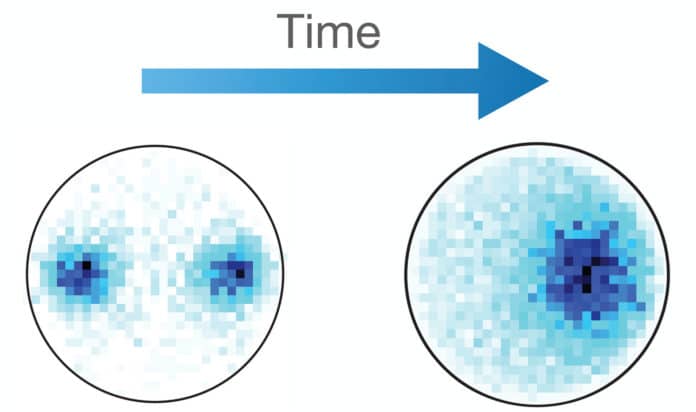Turbulence continues to stand as one of the most challenging problems in physics despite several centuries of study. Most phenomena occurring in the turbulent motion of fluids are strongly nonequilibrium in nature.
These turbulent fluid flows cause the formation of cyclones or Jupiter’s Great Red Spot. A model for two-dimensional vortex equilibrium by Nobel Laureate Lars Onsager explains these structures. However, experiments have tended to conflict with the predictions.
The new research, by a team from The University of Queensland, the ARC Centre of Excellence for Engineered Quantum Systems (EQUS), and the ARC Centre of Excellence in Future Low-Energy Electronics Technologies (FLEET) offers experimental validation of a 70-year-old theory- Onsager’s model.
Lead author and theorist Dr. Matt Reeves said, “A key complication is that most fluids are viscous, meaning they resist flow.”
Superfluids don’t have viscosity; hence, they are ideal candidates to realize Onsager’s model.
Scientists studied vortices’ behavior in s superfluid called Bose-Einstein condensate. They created a thin disk of the superfluid. Then, by using lasers, they injected vortices at carefully specified locations.
Dr. Tyler Neely, who led the experiments, said, “The vortices mixed rapidly, merging into a single large cluster in only a few seconds, much like a large cyclone forming from the turbulent atmosphere.”
“However, the most exciting thing was the remarkable agreement between theory and experiment—the theory predicted the shape of the final giant vortex structures in the superfluid exceptionally well.”
The results show that superfluids can get new insights into turbulence.
Journal Reference:
- Matthew T. Reeves, Kwan Goddard-Lee et al. Turbulent Relaxation to Equilibrium in a Two-Dimensional Quantum Vortex Gas. DOI: 10.1103/PhysRevX.12.011031
